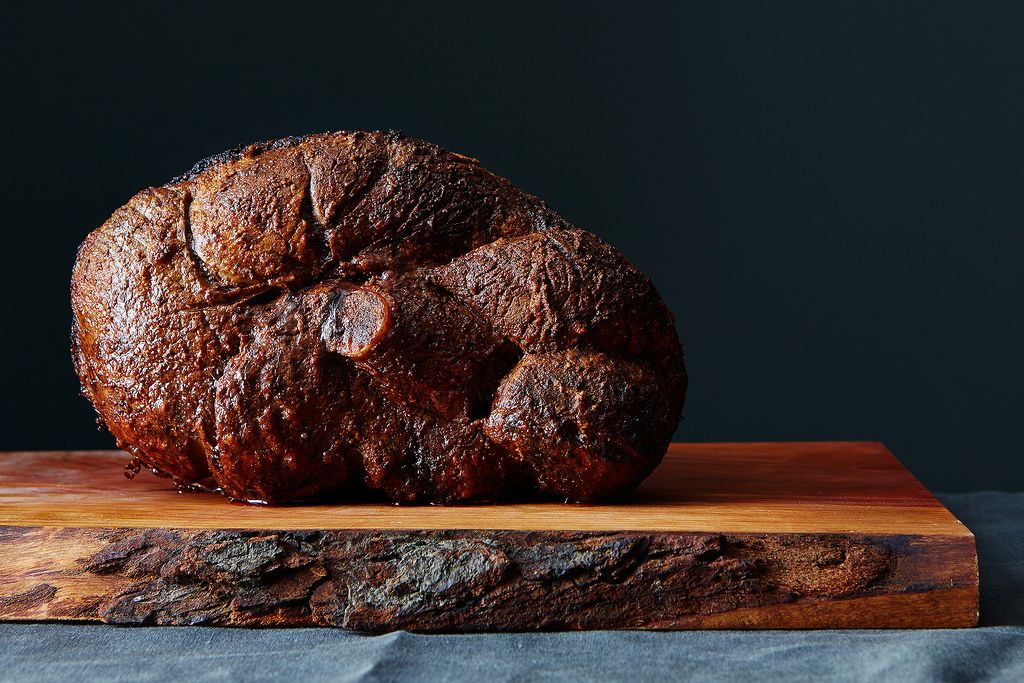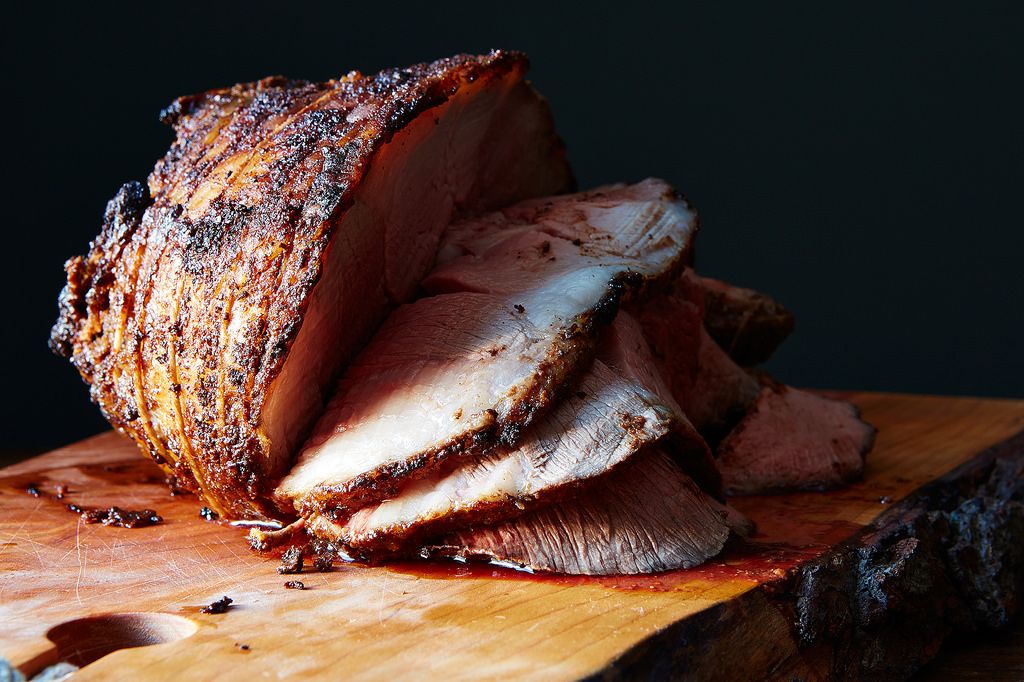Every Friday, Cara Nicoletti of The Meat Hook helps us get to know our favorite cuts of meat a little bit better – and introduces us to a few new ones, too. Read on, study up, then hightail it to your nearest butcher. This post is brought to you by the American Lamb Board as part of Lamb Lovers Month.
Today: Get to know the leg of lamb a little better -- and learn how to roast it like a pro.

Americans eat more meat than almost any other country in the world: a staggering 270 pounds per person per year. But less than 1 pound of that total number is made up of lamb; roasts like leg of lamb are usually reserved for holidays and special occasions. One of the wonderful things about this season, though, is that there are so many opportunities to cook with such a versatile meat. (Think winter soups, stews, braises, and slow roasts.)
We’ve talked about lamb shanks before, but now we’re going to move up just slightly on the animal and talk about the back haunches, or the leg of the lamb. The hind legs of an animal are comprised of some of the hardest working muscles, which means that they will be leaner and take slightly longer to break down than muscles that don’t work quite as hard. Lamb is the exception to this rule: Its muscles haven’t worked too hard, so its meat is naturally tender.

When you’re buying leg of lamb, you have a few options: Do you want the bone in or the bone out? I always prefer bone-in for roasting and braising, because the bone adds richness to the braising liquids, and flavor and moisture to the meat during cooking. You should also choose whether you want the shank and the sirloin left on or taken off. (The first is only for presentation, the second is to add hulk to the roast.) If you decide to keep the sirloin on, have your butcher debone it to make carving easier before tying it up.
Leg of lamb is wonderfully versatile -- it can be cubed and used for stew, braised, or simply roasted. Because it’s a well-exercised muscle, it also gets a good deal of blood flow; this means that it is one of the most flavorful cuts on the animal. Like beef, lamb doesn’t need to be cooked all the way through, and is best at a rosy medium-rare (135 to 140° F, when finished). Here, we’re rubbing it with lemons, garlic, and a spice mixture of coriander, cayenne, cumin, smoked paprika, and sumac -- then roasting it to perfection.

Roast Leg of Lamb
Serves 8 to 10
1/2 cup olive oil
1/3 cup lemon juice
7 garlic cloves
1 teaspoon coriander
2 teaspoons sumac
1/2 teaspoon cayenne
2 tablespoons smoked paprika
1 tablespoon salt
2 teaspoons black pepper
2 teaspoons cumin
One 4 1/2 to 5 pound bone-in leg of lamb
See the full recipe (and save and print it) here.
Photos by Mark Weinberg
This post is brought to you by the American Lamb Board. American lamb is raised in every state -- look out for it all year at your local grocery store, butcher shop, or farmers market.




See what other Food52 readers are saying.